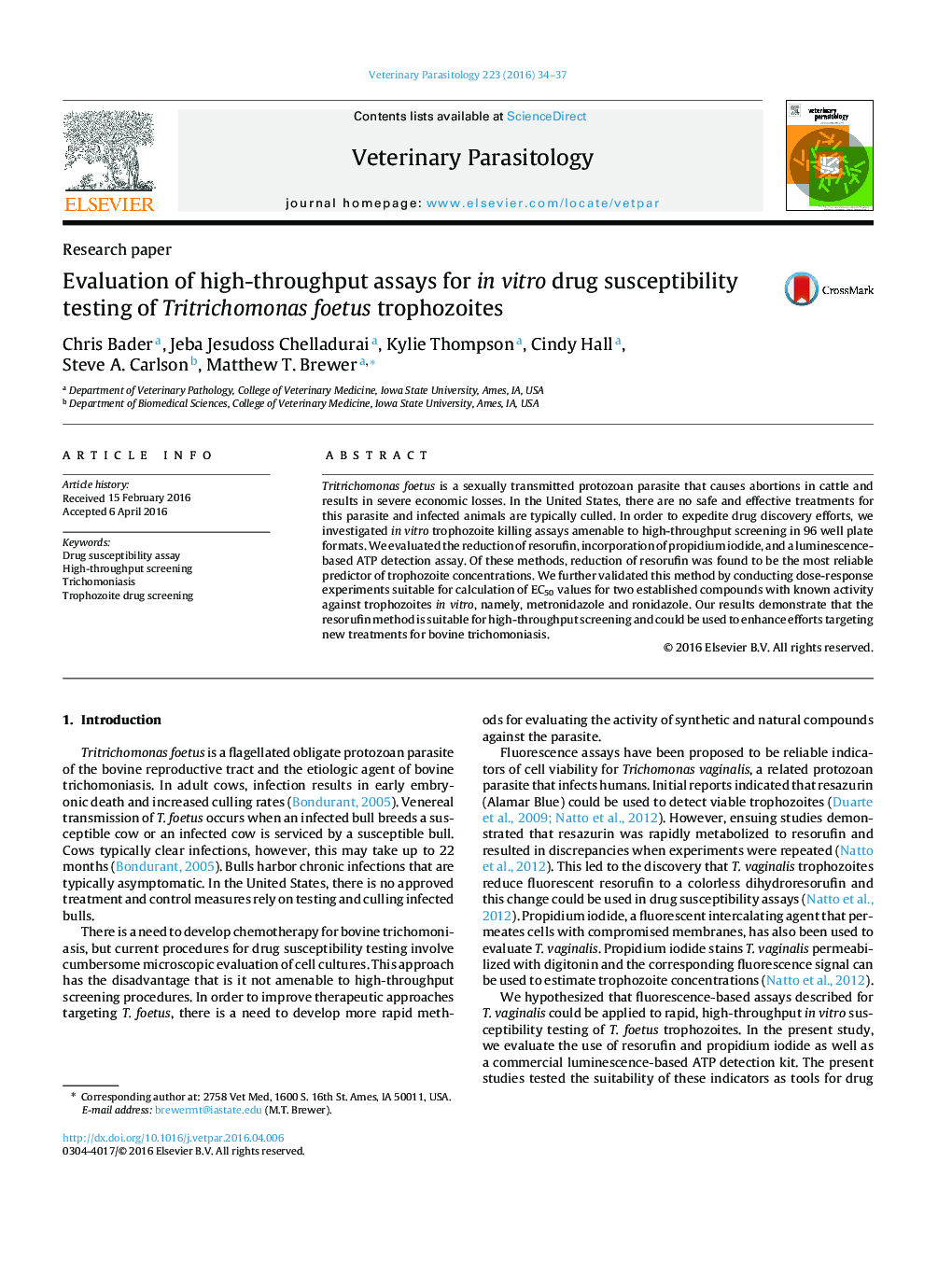| Article ID | Journal | Published Year | Pages | File Type |
|---|---|---|---|---|
| 2469780 | Veterinary Parasitology | 2016 | 4 Pages |
•Researchers routinely use microscopy as a tool for evaluating Tritrichomonas foetus drug susceptibility.•We evaluated resorufin reduction, propidium iodide staining, and ATP production as biomarkers for rapid screening of trophozoites in drug susceptibility assays.•Resorufin reduction was the most suitable for drug susceptibility assays and has the advantage of being amenable to a high-throughput format.
Tritrichomonas foetus is a sexually transmitted protozoan parasite that causes abortions in cattle and results in severe economic losses. In the United States, there are no safe and effective treatments for this parasite and infected animals are typically culled. In order to expedite drug discovery efforts, we investigated in vitro trophozoite killing assays amenable to high-throughput screening in 96 well plate formats. We evaluated the reduction of resorufin, incorporation of propidium iodide, and a luminescence-based ATP detection assay. Of these methods, reduction of resorufin was found to be the most reliable predictor of trophozoite concentrations. We further validated this method by conducting dose-response experiments suitable for calculation of EC50 values for two established compounds with known activity against trophozoites in vitro, namely, metronidazole and ronidazole. Our results demonstrate that the resorufin method is suitable for high-throughput screening and could be used to enhance efforts targeting new treatments for bovine trichomoniasis.
